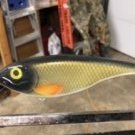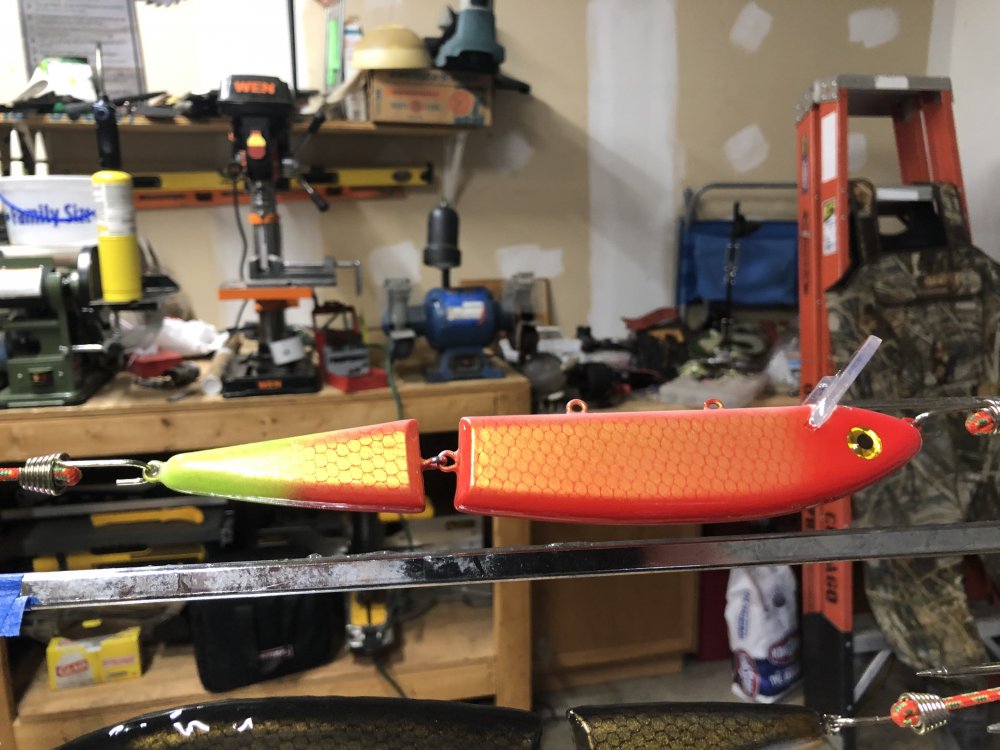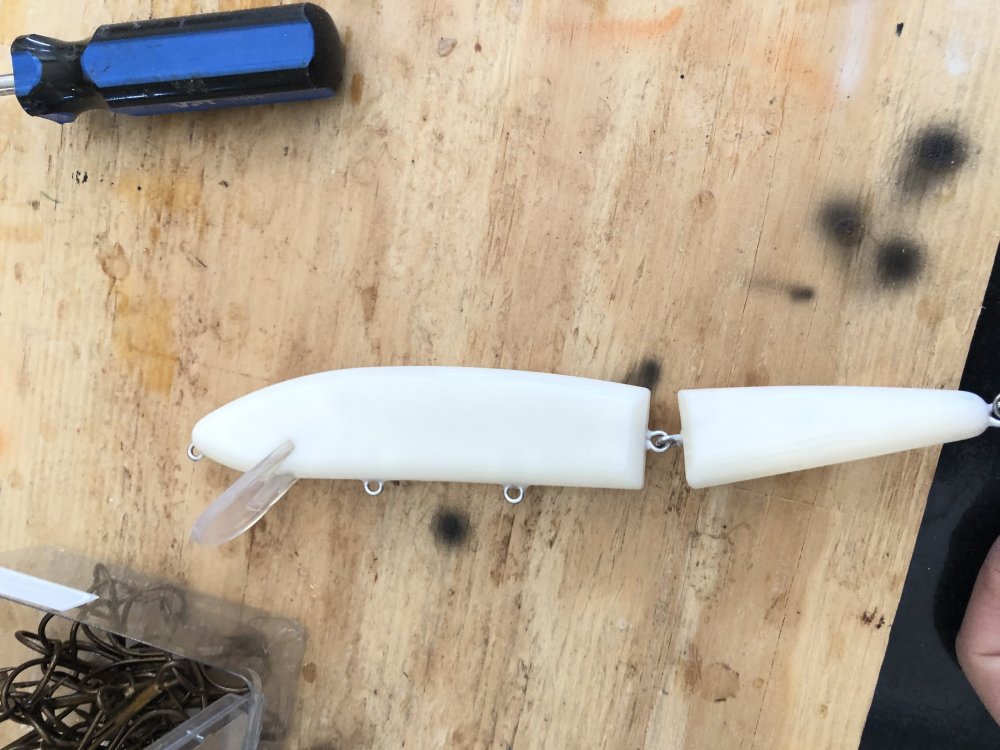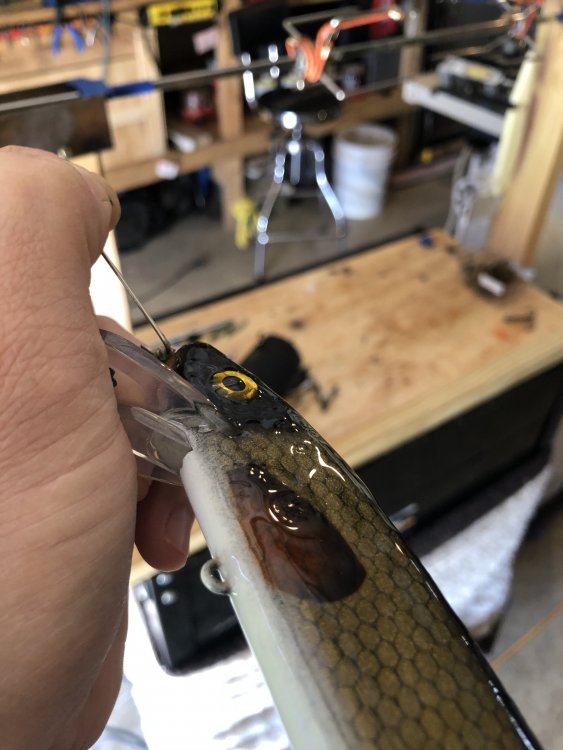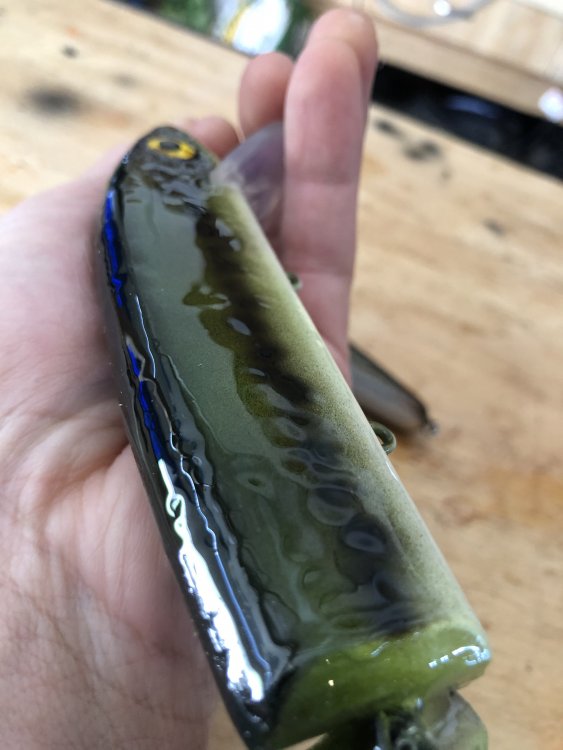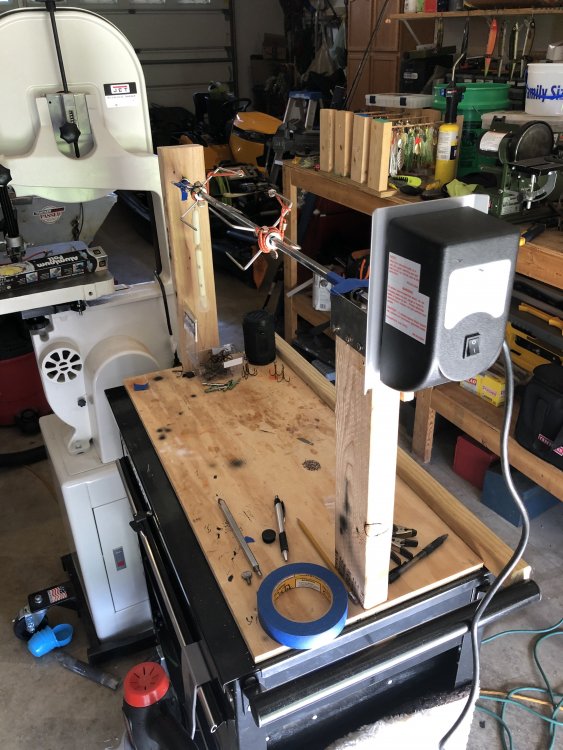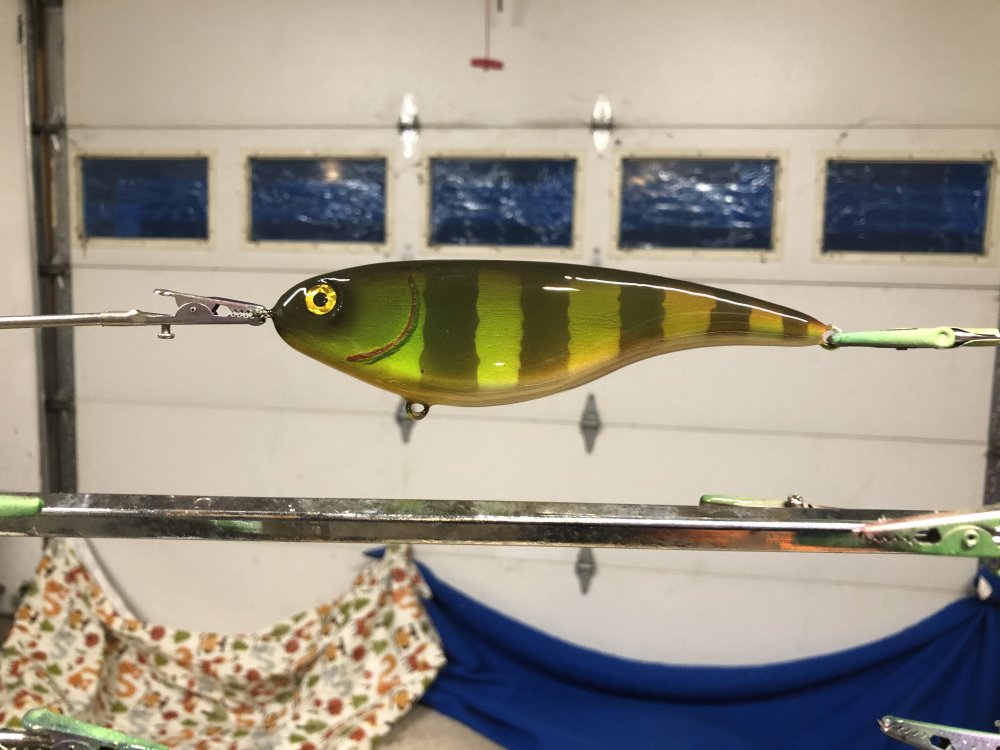Search the Community
Showing results for tags 'lure turner'.
-
I have been painting/making my own spinnerbaits and plastic/wooden baits for the last few years with airbrush and createx paints. I haven’t had many issues at all with epoxies until now. I made a cheap fast lure turner with a grill rotisserie set up, and I turn lures to dry overnight in my heated garage. I live in the northwest, and the current temps out are 55-60 degrees with around 50% humidity. I keep the garage heated between 65-70 any time I am painting or clear coating my lures. I purchased extra large jointed musky crankbaits from barlows tackle. Every single one of these baits have had epoxy issues on the turner. I have used devcon2ton 30 minute, flex coat gel, East coast resin, and true coat to coat my lures. I had success with d2ton on smaller lures not on a turner. I also had success with east coast resin on a musky bait in a turner, but it took 3 or 4 coats to even out. Most large baits I make are taking multiple coats to get looking nice on the turner, when I had very little issues without a turner and devcon2ton on small baits. I am going to try some smaller baits again to see if I have the same success as before. All of my bigger baits seem to have some minor issues with waves or pitting, and it is getting discouraging. I also wipe down my plastic baits with alcohol before painting them and do not touch any part of the baits before epoxy. I am hoping to get more experienced help on this topic. Here are my questions: 1. These jointed musky baits are made of a different plastic than the others. Could this be the reason I am having all these sudden issues? I have heard of spraying createx clear coat Over the paint before epoxy, and this is supposed to help trap impurities that affect the epoxy?? I ordered some of this and will try, but I am also worried about spraying this clear coat through my nice air brushes and having cleaning/clogging issues. Any advice on this? These Musky baits have been the primary issue, but I had some issues on a large wooden jerk bait also recently that took numerous coats to fix 2. I was worried that vibrations from my rotisserie motor traveling down the turning rod may be causing the waves in the final cure. I have installed rubber grommets on all the fastening screws for the motor to help this morning. I still feel light vibration when I touch the turning rod. Could this cause issues? Advice? I posted a few pics of set up/ baits with waves on finish. This site has been a great help in starting out, and this is my first actual post.
-
I was wondering if a guy could buy a lure turner to dry epoxy on hard baits or if he had to make one?
-
Lure turner: build a pegboard L frame on 1-1/2 by 1-1/2 frame. Make it about 30" high on the end and 20" high on the front(pic3). Mount microwave or similar geared motor (plenty in the dump) to work desk about 28" high. Cut a section of swim noodle cut to fit in between motor and end of box. Glue an old bicycle wheel hub with inside end ground down to fit inside noodle to far end of noodle(pic 1). Attach shorter plastic pipe to motor with tape and E6000. Slide pipe into noodle. This gives you a friction fit to the foam. Build up with tape for more grip. I use this method so I can just grab the foam to insert another lure - no need to unplug. Mount the bearing to the far end of pegboard frame. Now you can insert lure holders through the foam. Make the slots miss the pipe on the front side - so they will pass all the way through the noodle. Balance the holes by placing them every 90 degrees. You can see that I mounted over 20 lures on my 2 ft long turner. It turns great, no belts to slip while your back is turned. It is capable of mass production. I think the motor has enough torque to turn one 6 feet long. Lure holders #1(pic2): medium and small size binder clips lined with 1/16" adhesive foam on one or both sides. If you put the foam on the part of the clip next to the stick, it holds the lure at an angle. Attached pic shows how this can maximize room at your bench or on your turner. Tape and glue with e 6000 to ¼” popsicle sticks. These hold most lure lips well enough to turn them. Lure holders #2: cut off end of cheap, or even used, paint brushes and insert into alligator clips. These have some spring in them for stretching out swimbaits. Note: Binder clips (in mini, medium, and large) with 1/16" adhesive foam (but without the sticks) make great scale netting clips which will not scratch lures.


